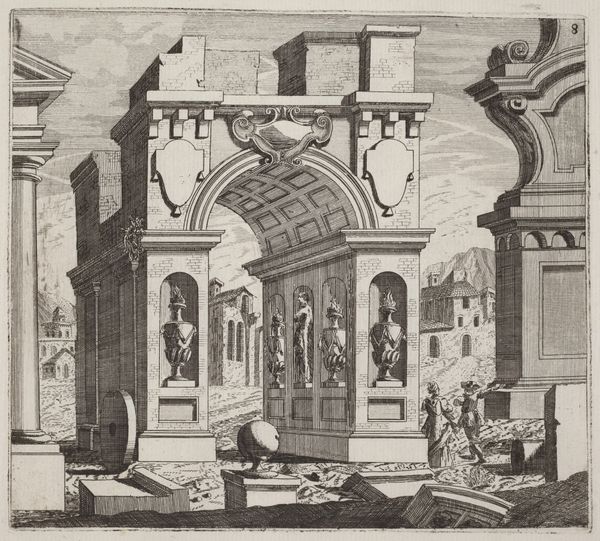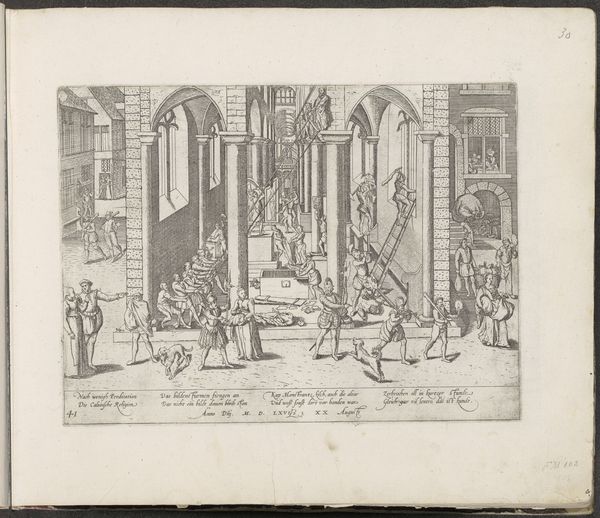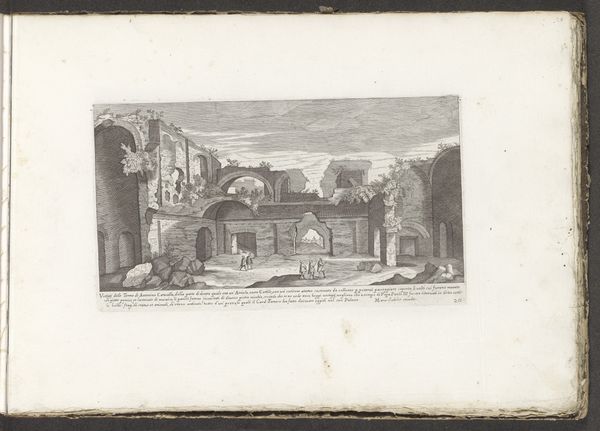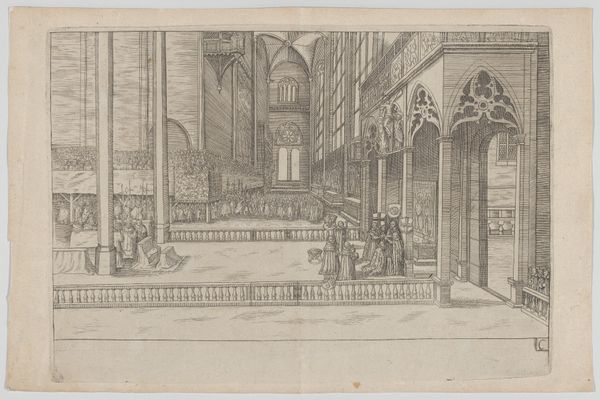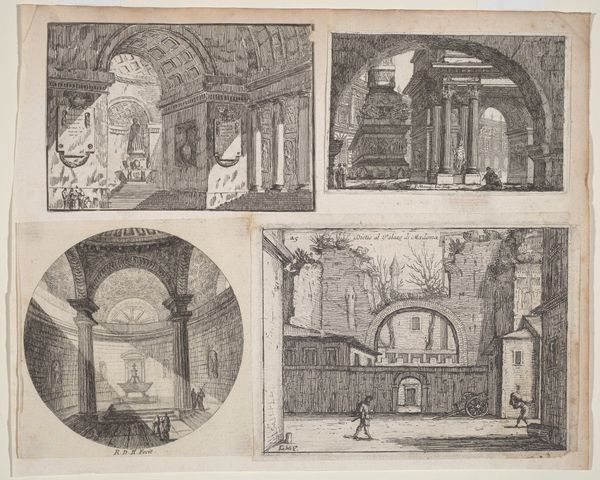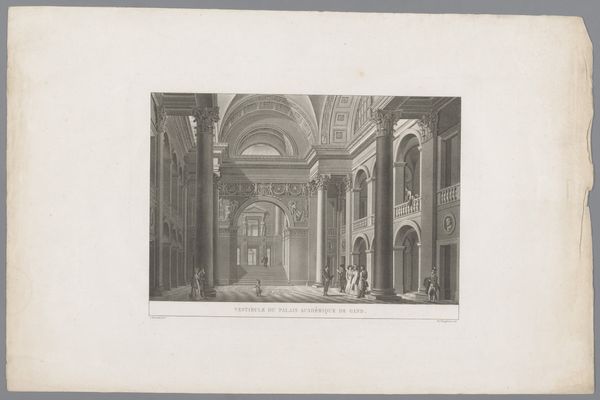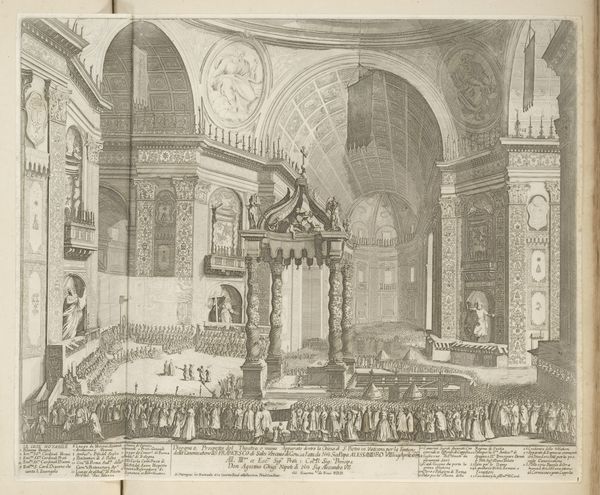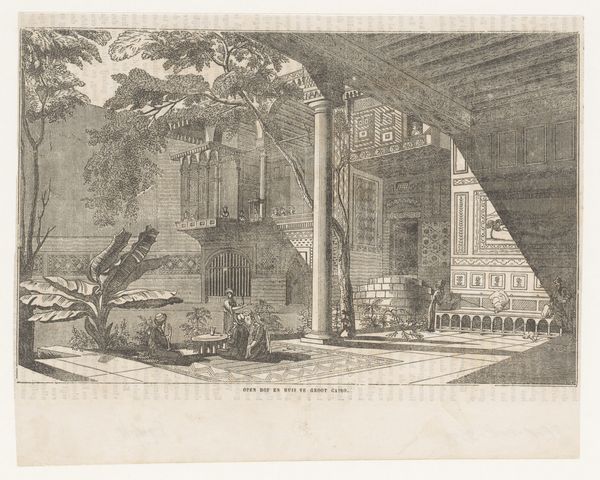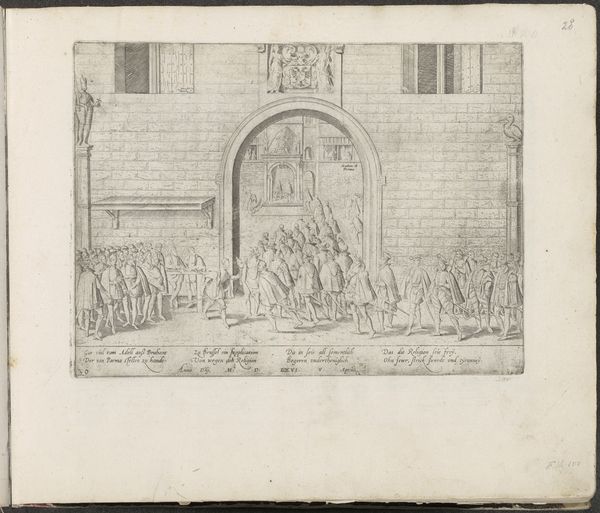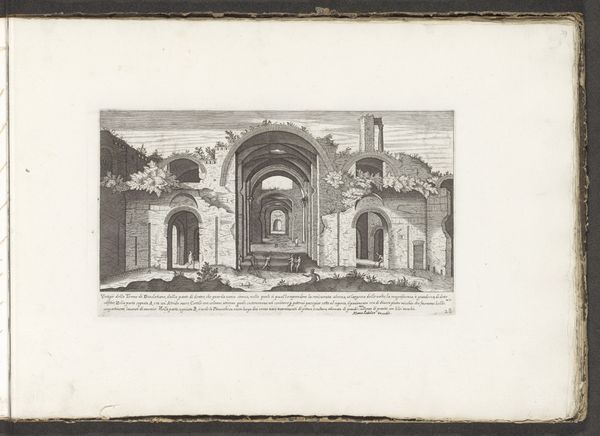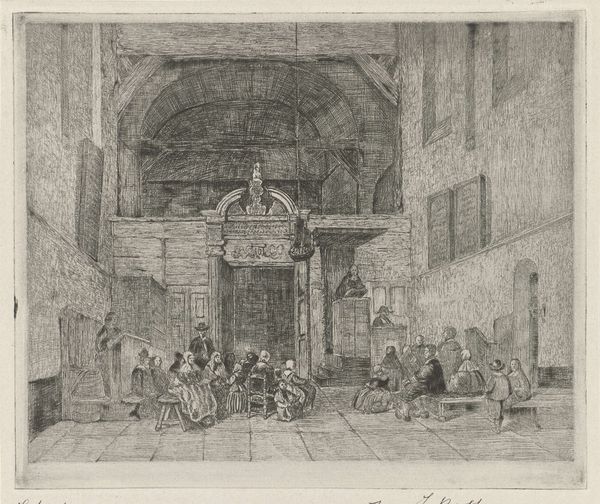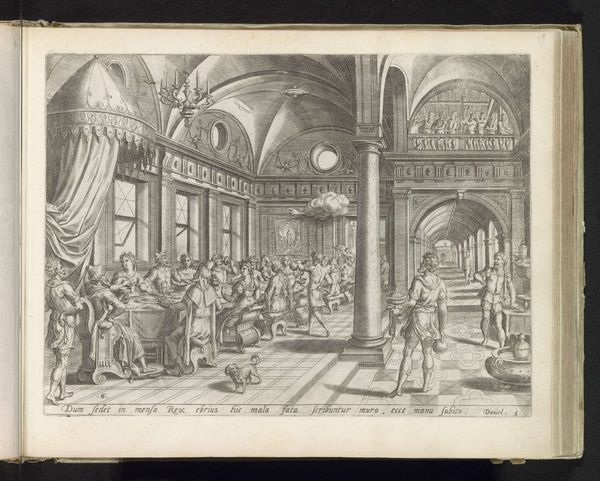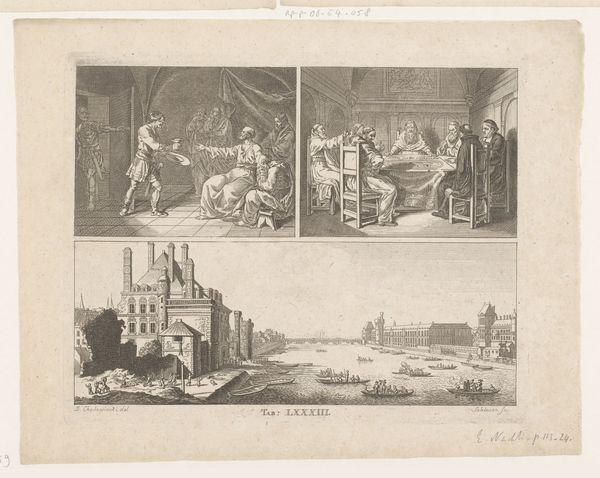
print, engraving
# print
#
landscape
#
figuration
#
vanitas
#
romanticism
#
history-painting
#
engraving
Dimensions: height 183 mm, width 213 mm
Copyright: Rijks Museum: Open Domain
Editor: So, this print is called "Gezicht op de catacomben van de Kapucijnen te Palermo", dating from 1837, and is currently held at the Rijksmuseum. Looking at the image, I can't help but feel a sense of the macabre, with skeletons posed in these alcoves. It's fascinating and a bit unsettling. What strikes you most about it? Curator: What immediately stands out is the public nature of this depiction of death. In the 19th century, especially with the rise of Romanticism, there was a growing fascination with the morbid and the sublime. This print, circulating widely, transforms what was a somewhat private ritual space – a burial catacomb - into a spectacle, catering to a societal appetite for confronting mortality. Do you see how the figures, some seemingly tourists, interact with this space? Editor: Yes, some figures are clearly observers. So, it's less about religious contemplation, more about societal consumption of death? Curator: Precisely! Think about the rise of museums and public art exhibitions during this time. Death, traditionally confined to religious and familial spheres, became a public commodity, displayed, categorized, and even aestheticized. Consider also, the power dynamics inherent in who gets to represent and view such spaces, and for what purpose. Who benefits from framing mortality in this way? Editor: I never thought about it in that way! Seeing it now, it feels less like a landscape, and more like a form of cultural tourism shaped by specific societal interests and, dare I say, power. It's unsettling to think of these catacombs as an exhibition of death. Curator: It invites reflection on how we, even today, consume images and narratives around death and tragedy. What purposes do these serve, and who are they truly for? Editor: Definitely gave me a new perspective to consider. It's interesting how understanding the historical and social context really transforms the way we see even an unsettling image like this. Thanks for this interpretation!
Comments
No comments
Be the first to comment and join the conversation on the ultimate creative platform.
